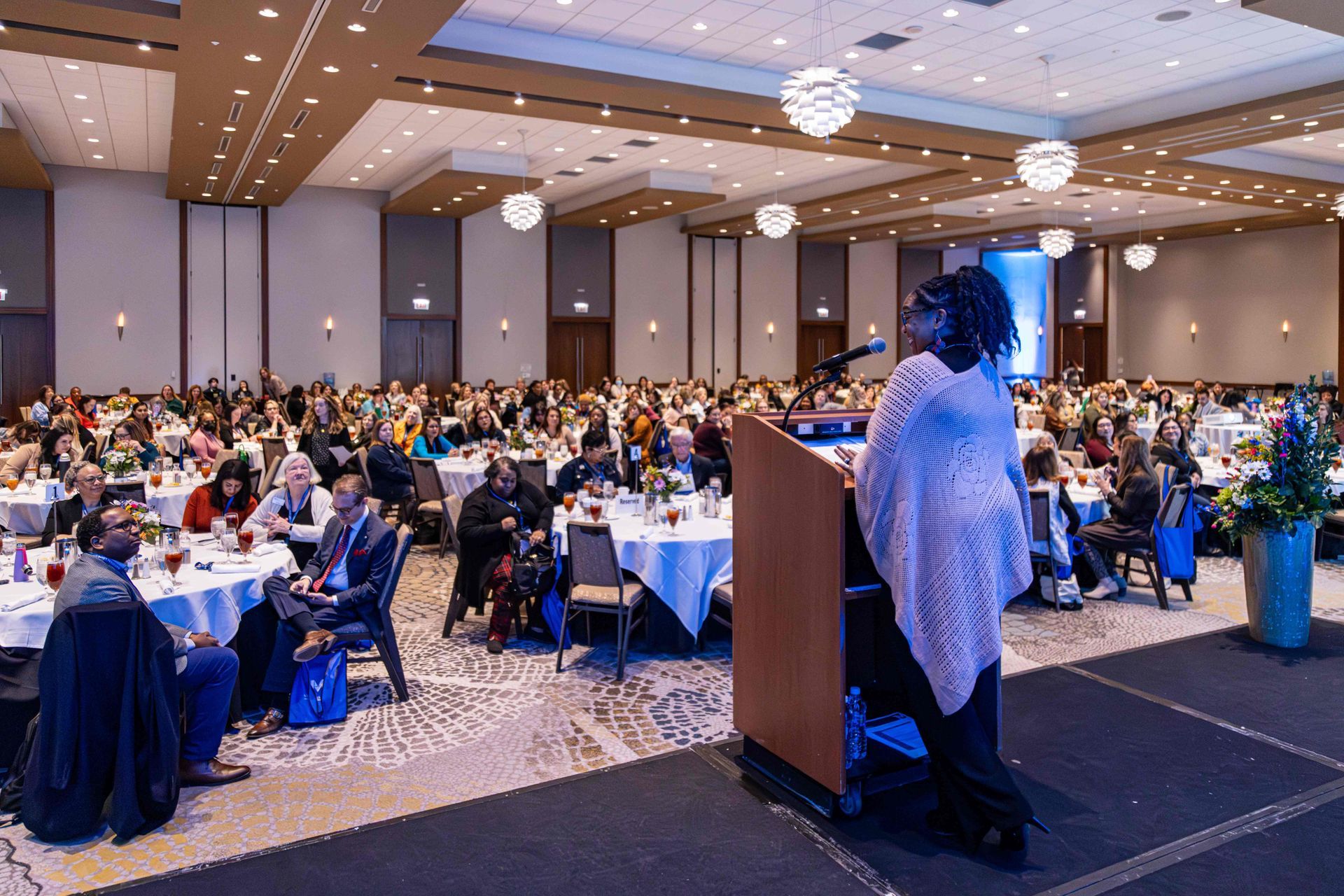BY Iris Corral, M.Ed. | December 14, 2021
This document may be printed, photocopied, and disseminated freely with attribution. All content is the property of the McCormick Center for Early Childhood Leadership.
I have some very fond childhood memories of visiting Chinatown in Chicago with my family. My father would take us up and down the main avenue to look at the windows. Every time I went, I found it to be a fascinating place to visit. The windows had symbols I had never seen before. I was amazed by the large fish swimming in the tanks and the ducks for sale that hung from ropes in storefront windows. My father would buy each of us a mystery box which was always the highlight of our trip. I loved it all, taking in the colors, music, toys, and sweets. Then one day, I began to notice that my visits were no longer the same. I was still fascinated looking at the windows; however, now I wanted to know what the people around me were saying and what the symbols on the windows meant. During my young teen years, I began to feel lost during my visits. I felt out of place when I visited the street I once saw as magical. The culture mattered to me, and I had no one to explain it to me. I felt like I did not fit in.
Fast forward to many years later when I became the administrator of a fairly large preschool program in a primarily Latino community. I set a goal to provide opportunities in the program that would allow every family to fit in.
We focused on offering various opportunities during and after program hours in the preferred language of families. We offered workshops in both English and Spanish. At least one teacher in each classroom, all of the support staff, and I spoke both of the languages needed to communicate with every parent/guardian during family-teacher conferences. I thought we were doing enough until I met a colleague who challenged me to take a deeper look into how we welcomed, acknowledged, and respected each and every family. It made me ask the question, was the program making enough effort in these areas? As the program administrator, what opportunities could I offer that would be inviting to the families? How could I include every family in all aspects of our program? I suddenly realized that while we were good, we definitely had areas where we could improve. I knew we had families entering the program feeling the same way I felt when I walked through Chinatown. The difference now was that I was in a position to fix that.
I started by asking the teachers in each classroom to translate the lesson plans, as well as any applicable early learning standards, into Spanish. We wanted families to be able to read about what their children were learning and the learning objective(s) behind the weekly activities.
We then began to offer parent-child activity days two times a year that provided hands-on activities that mirrored what the children did in the classroom. Teachers explained how the activities supported children’s learning and development while children played with their parents and guardians. After each of these events, we often heard from the families that they had no idea their children were learning so much until they participated in the activities alongside them.
We added English and Spanish labels to everything we could possibly think of. We labeled the heaters, outlets, hallways, staircase, desks, printers, and windows, in addition to traditional classroom items the teachers had already labeled. In every area where we were able to add a label, we did! It wasn’t long before I heard children asking their adults what the words meant and family members taking the time to explain them.
Daily communication with every family was highly encouraged. I knew that even with all of the wonderful text printed all around the school, we had at least 10% of family members who could not read. Whenever an event was scheduled, families were given written material and informed verbally in their primary language.
Take-home family activities were available throughout the year. The final products were posted in the hallways for everyone to view and to encourage conversations. Our most popular activity was “My Hopes and Dreams for My Child.” Families wrote about what they would like their children’s future to be. They were encouraged to add pictures of their family members. The hallways were filled with their smiling faces and inspiring stories.
Now it’s my turn to encourage you. Take a look at your classrooms, offices, hallways, and other spaces. Are these areas welcoming to each and every family you serve? How could you make the space more inclusive for all? What else can you do to encourage family involvement and engagement? When families feel accepted and welcomed into a program, genuine, authentic engagement occurs. Everyone wins with this effort.
Are you interested in learning more about practices for family support and engagement? The Program Administration Scale (PAS) and the Business Administration Scale for Family Child (BAS) are great resources! Additionally, we offer a variety of professional development opportunities including:
- Authentic Engagement: Creating True Partnerships with Families (virtual or in-person training)
- Building Partnerships and Engaging Families (virtual or in-person training)
- PAS and BAS Reliability Training (in-person training)
- Facilitating Responsive Family Engagement (Aim4Excellence Module 8)
Contact the McCormick Center https://mccormickcenter.nl.edu/contact/ for more information.
Iris Corral, M.Ed., is Leadership Training Specialist for the McCormick Center for Early Childhood Leadership at National Louis University. In this role, Iris assists with trainings for the Taking the Lead, Ready to Lead, and Taking Charge of Change leadership academies. Iris holds an associate degree in social service from Harold Washington College, a baccalaureate degree in integrative studies from Governors State University, and a master’s degree in early childhood administration from National Louis University. She has also earned her Illinois Director Credential-Level III and an ECE Credential-Level V. In addition to her role at the McCormick Center, Iris also serves as adjunct faculty at Morton College, where she teaches early childhood education courses. Prior to joining our team, Iris spent eight years working as a preschool director in a Preschool for All (PFA) program. Iris also worked at Erie Neighborhood House in Chicago for eleven years as a teacher assistant and the parent support/health coordinator.





